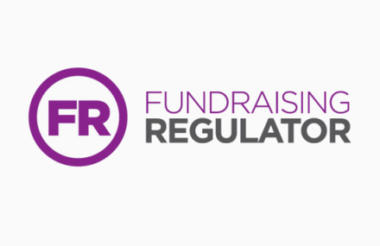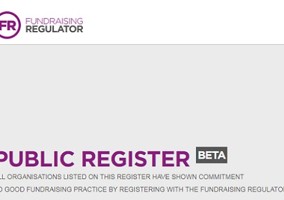Almost three years ago, Sir Stuart Etherington recommended the establishment of a new Fundraising Regulator. Just over two years ago, it happened. It has been long enough now that we can fairly judge whether it has been a success.
The environment which led to the establishment of the regulator was a febrile one. Charities had been criticised heavily for their misuse of donor data, which we now know to be wholly non-compliant with the Data Protection Act. The result had been that some donors ended up on hundreds of mailing lists. The headlines told of donors being hounded and hassled.
All of this highlighted what some in the sector had known for ages. Fundraising regulation was a dog’s dinner, and badly in need of reform. The former regulator, the Fundraising Standards Board (FRSB), had been calling for change, but was desperately under-resourced.
A clean break was considered best; the FRSB was shut down and replaced with a new non-statutory Fundraising Regulator. The Code of Fundraising Practice was stripped from the Institute of Fundraising and given to the new body. A new levy was introduced for funding – nominally voluntary but effectively expected of every charity fundraising at scale.
And a new Fundraising Preference Service was established to make it easier for members of the public to remove themselves from charity marketing communications.
The issue is whether this new regime offers sufficient scrutiny of fundraising practices. In practice, there are still question marks.
A lot of the problems are in the model itself, which was introduced rapidly. Those doing it did a good job in the circumstances, but the ability to consider it at leisure has illustrated some issues.
Struggle for funding
From the start, the staff charged with establishing the new regulator have had a battle on their hands. Though they themselves are able and thoughtful, circumstances have conspired against them to make it difficult for the regulator to really succeed, although external factors have broadly masked these issues.
One thing which has hampered them has been the struggle for funds. The new regulator was supposed to have a budget of at least £2.2m, based on the idea that more than 2,000 charities would be eligible as they spent £100,000 on fundraising. It has since transpired that there are more like 1,800 charities in this category, and the regulator’s actual budget is more like £1.7m. The regulator itself originally said this was not an adequate amount, which is concerning.
Out of the 1,800 charities eligible for the levy, 26 have said they will not pay and a further 105 are not responding to requests, which equates to 7 per cent of all projected revenue. Another 14 per cent of projected revenue has had to be spent on collecting the money in the first place. There have been huge problems with building the correct list of charities to levy, suggesting that statutory funding might make life easier.
Non-payment of the levy appears to be particularly concentrated at the smaller end of the eligible charity sector. Smaller charities have been asked to contribute proportionally more than larger ones, but have arguably not benefited from the same level of proactive engagement – although there are signs this may be improving.
Although the senior staff of the regulator now claim their current funding is workable, there are obviously questions over whether this is really the right model.
Communications
The regulator’s problems engaging with some parts of the fundraising community stem in part from its communications strategy. This includes the PR offensive launched by its chair, Lord Grade, who has from time to time found himself at odds with the sector he regulates.
Grade’s PR approach appears to have focused not on charities, but on the right-wing press, giving a series of interviews to The Times and The Daily Telegraph describing fundraisers as rogues, cowboys and laggards – among other things.
It’s an approach which has alienated some fundraisers, and has been made worse because the regulator’s staff have proved reticent about revealing information. In general, the regulator shows a lack of openness in communication right across the organisation. This lack is a problem because justice has to be seen to be done, and at present, that isn’t the perception of many charities.
The new regulator has adopted a surprisingly soft approach, given the level of concern about fundraising practice which led to its establishment. It has closed 55 investigations and found around 45 of those to involve breaches of the code, but we don’t know the details of these. Almost all of its adjudications have been kept secret, after those found to have transgressed agreed to accept and implement the regulator’s rules.
Similarly, there are no longer plans to publish a complaints report – a vital document which would have given us a sense of how the sector as a whole is performing.
This lack of openness makes it hard to scrutinise what the regulator is doing, especially given that unlike statutory regulators it has no duty to tell anyone anything. We have little idea of its effectiveness as a deterrent or its ability to intervene.
It may be that the regulator is thorough, proactive and diligent in its investigations, but since it releases so little information, we just don’t know.
Lack of sanctions
We do know that the Fundraising Regulator is relatively limited in the sanctions it can hand out to charities. In theory it now has the Charity Commission as a backstop, but we do not know how this will work in practice, or even if it has so far been tested.
The Fundraising Preference Service, meanwhile, is a lame duck. It’s almost entirely unused, with only a few thousand users, many of whom, if we’re honest, are journalists and fundraisers suppressing one another to see if the service works. Which it doesn’t, since the original plan of giving donors “a reset button” on all charity communications was abandoned.
And while it’s clear that fundraising charities have behaved much better in the last year, it’s far from clear how much of this is down to the regulator. The sector is running scared of the Daily Mail and the ICO, and it may be that the shadow of these bigger beasts has created an impression that the regulator is effective.
Fundraising companies
One significant factor in the fundraising environment is the collapse of many of the agencies which were caught up in the various scandals. It was really the agencies, not the charities, which were directly at fault, although obviously the charities bear some blame for not properly monitoring their suppliers’ behaviour.
Agencies were described by Lord Grade as the “Wild West” of fundraising, and while this isn’t necessarily the best language, nor is it miles off the mark.
So it is odd that the regulator has so little ability to influence them, and does not require them to register or pay the levy. In particular, it has failed to intervene in the issue of clothing collection bags, where there appears to be widespread lawbreaking.
Donor-first regulation
Another thing that isn’t clear is whether the current approach from the Fundraising Regulator is sufficiently centred around the donor. With the exception of Lord Grade, the regulator draws much of its expertise and insight from the charity sector, and is in danger of being run for the benefit of charities. This maybe isn’t surprising. The sector pays the levy, and he who pays the piper calls the tune.
What’s more, donors usually pay relatively little attention to fundraising, while charities pay a huge amount. If the sector cavils daily, while donors pay little attention, it’s not surprising if charities get their way.
Other industries successfully pay for their own regulation, it’s true, but most of those where it succeeds either have far stricter professional qualifications and licences, and/or statutory backing for those payments. Without those things, it was always going to be a struggle.
A distance to go
In short, then, it’s far from clear that the new environment for fundraising regulation is a success. My gut feeling is that we still haven’t got it right – that a body with a voluntary levy and no legal standing is simply not strong enough to regulate fundraising effectively.
There’s a particular problem because it has such limited authority over fundraising agencies, which if we’re honest, are where the worst offences actually occur. We need a regime which says a charity cannot use a fundraising agency unless that agency has a licence from the regulator, which would finally leave the agencies open to proper inspections.
There may be significant improvements in fundraising practice to come if the Institute of Fundraising achieves chartered status. The regulator may also improve its transparency and communication and become a stronger force in the sector. So we can’t write off self-regulation just yet. But nor can we really be sure that it’s the best solution in the long term.
It seems very likely that things would have to go very seriously wrong at the Fundraising Regulator before anyone took any action. Its creation bears some hallmarks of a political fudge, designed to sound serious while concealing the fact that the government had no appetite for getting involved.
It’s likely to take a good long while before fundraising hits another crisis, so the current regulator should have plenty of space to prove its effectiveness. It will be interesting to see if it makes a go of it.
Related articles











